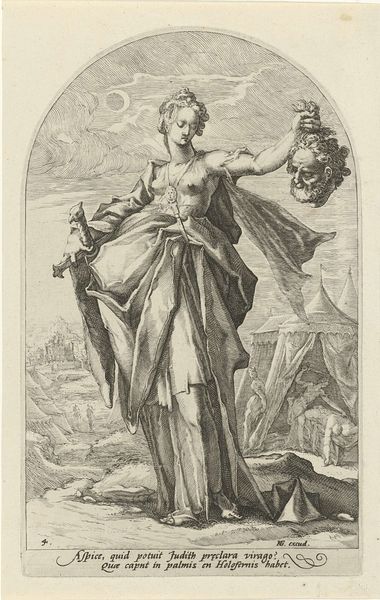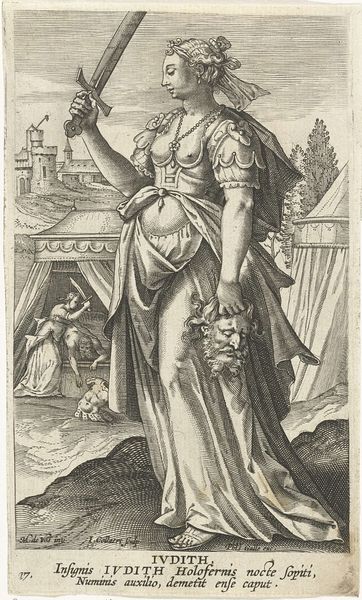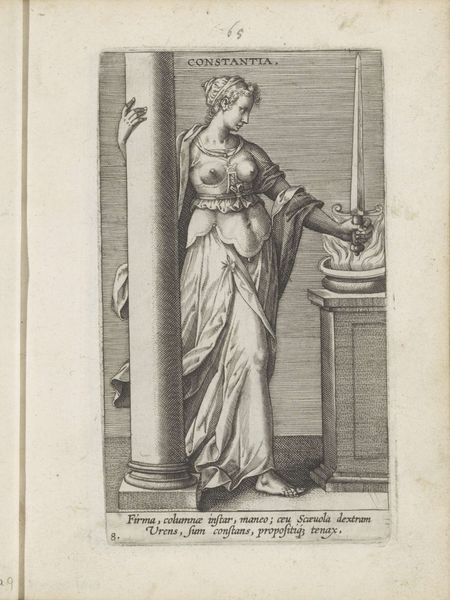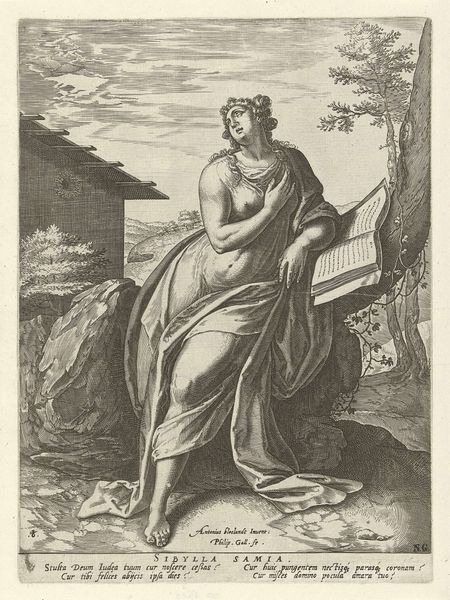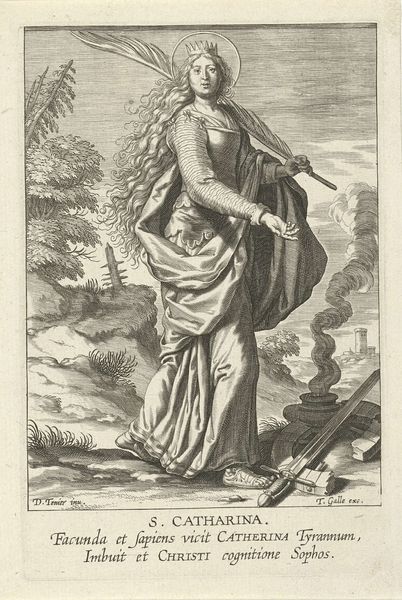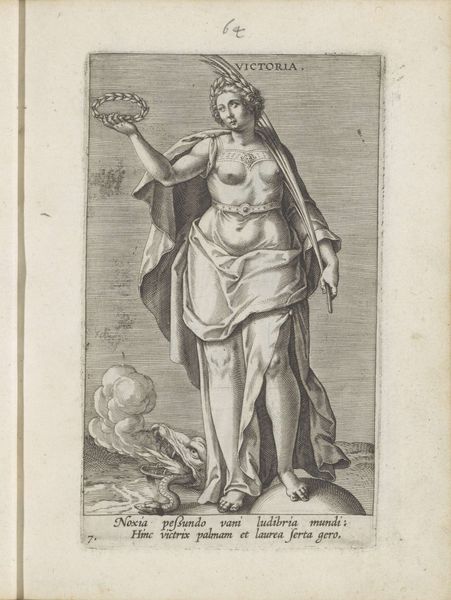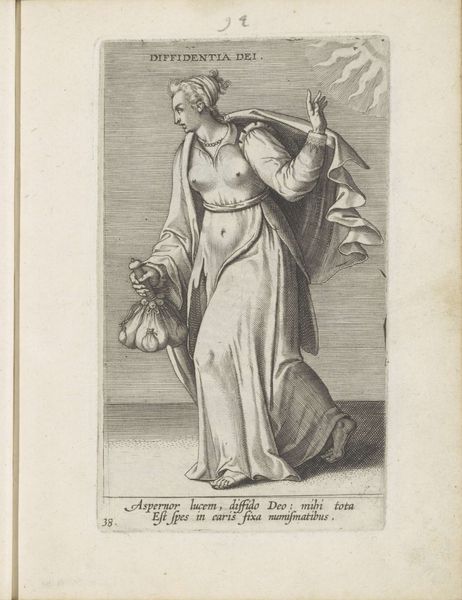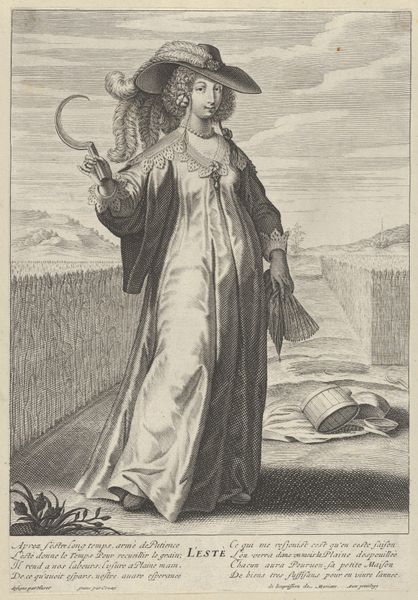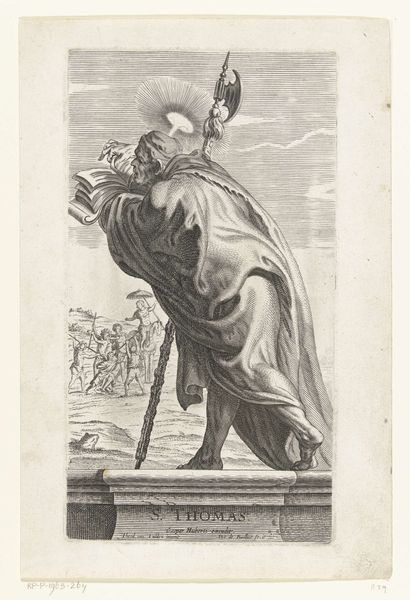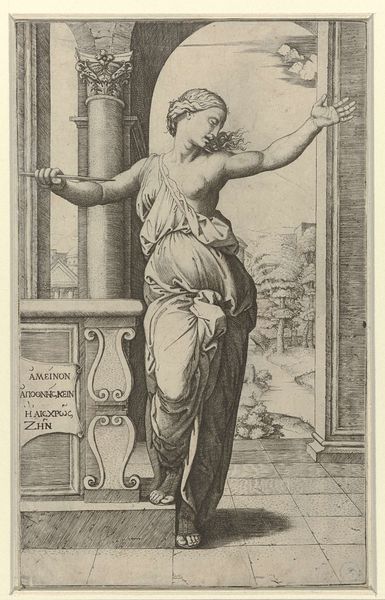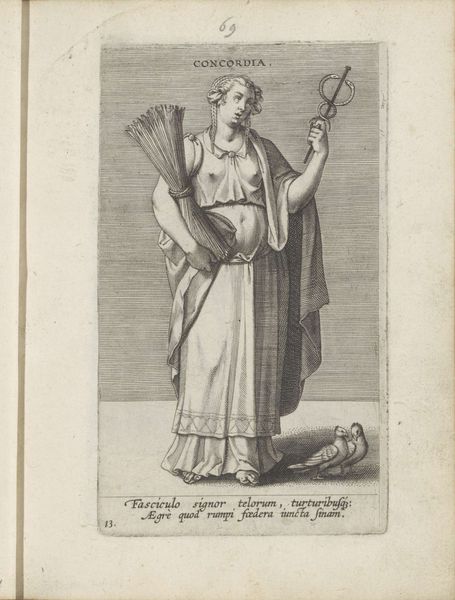
print, engraving
allegory
baroque
old engraving style
landscape
figuration
line
engraving
Dimensions: height 246 mm, width 183 mm
Copyright: Rijks Museum: Open Domain
Curator: The piece before us, titled "Voorzichtigheid(?)," which translates to "Caution(?)," is an engraving created in 1727 by Bernard Picart, presently housed at the Rijksmuseum. Editor: My first thought is, well, it feels staged. The figure looms large against a somewhat bustling landscape, but the tones are very uniform; even, almost lifeless. Curator: I agree with the staging, given the allegorical nature of the work, the landscape acts almost like a backdrop for the figure of Prudence, doesn't it? If you consider printmaking as a business, which it definitely was in the 18th century, these prints became very lucrative to meet market demand. Picart was smart in recognizing this demand, organizing large scale print productions by essentially making "art factories." Editor: So the "lifelessness" could stem from the modes of production! This aligns perfectly with considering the intersection of art, labor, and economics. But it does pose some interesting questions regarding his other pieces of work. Was he aware of what the mechanization of art implied? Also, I'm curious to explore how it reflected the changing social values and economic structures. Curator: I suspect so. Although in its current form, the engraving appears flat. If we were to go back to the means of production we could consider its relationship to graphic design or perhaps the influence on industrial design in a broad sense. As engraving, it’s dependent upon an artisanal labor that produces an object intended for larger consumption. What are your thoughts about that Cupid-like figure holding a banner that floats up by Prudentia? Editor: Definitely an angel. I think, beyond the religious associations of course, it is crucial to look at the iconographic and sociopolitical impact, the power dynamics they reproduce by centering a Western ideal, as it all adds a further layer to its reading as a symbolic project. The visual vocabulary that perpetuates those paradigms. Curator: Precisely. That helps in framing this work and opens avenues for further examination of not only Picart's artistic processes, but also its implications in the history of visual representation. Editor: Yes, and acknowledging the inherent power dynamics and social messages intertwined within art, hopefully leading to critical conversations.
Comments
No comments
Be the first to comment and join the conversation on the ultimate creative platform.
